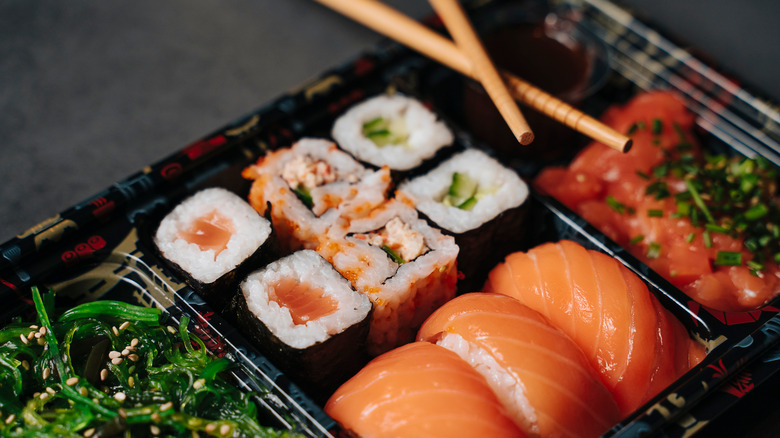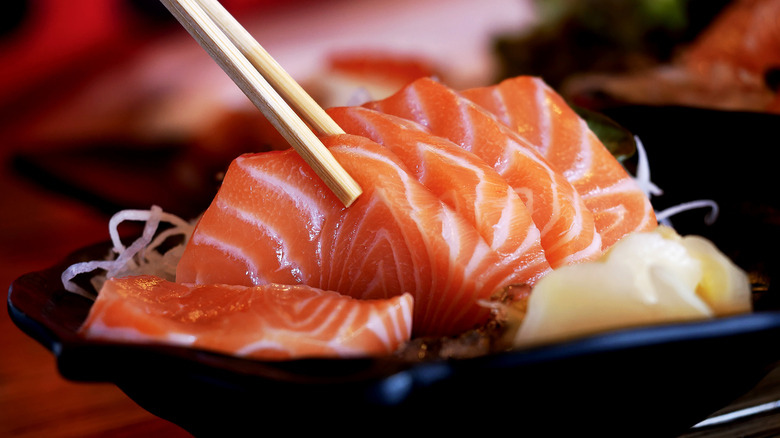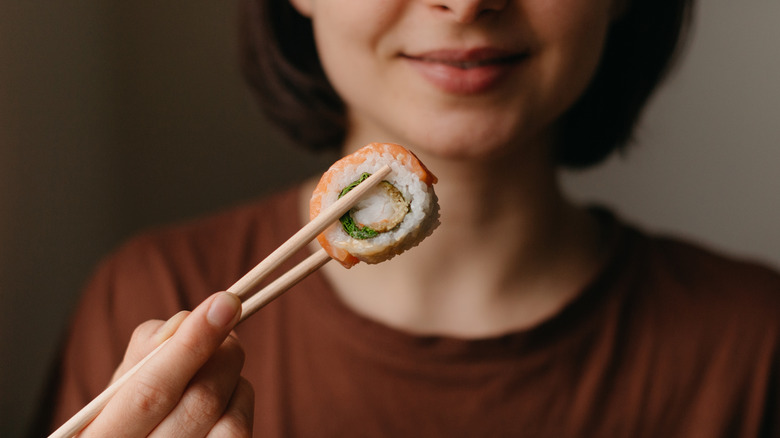The Difference Between Sushi And Sashimi
All sushi is not created equal, and we're here to help you decide what to choose from the robust menus of your favorite Japanese restaurants. As Chef's Pencil observes, sushi's popularity is at an all-time high. Whether you're ordering takeout from a sushi bar or grabbing a pre-made tray from your local grocery market, it can be difficult to make up your mind about the best sushi order. Menus display a variety of sashimi options, and columns list rolls prepared with fish, avocado, vegetables, and eggs. It's no wonder some eaters struggle to differentiate sushi from sashimi.
Yes, both sushi and sashimi are Japanese dishes made from raw ingredients and can be accompanied by soy sauce, ginger, and wasabi, but there is one major difference to remember the next time you're faced with overwhelming culinary decisions. Read on to know what you're getting when you order sashimi and sushi items from your neighborhood Japanese eatery.
The simplicity of sashimi
Sashimi is a raw, high-quality food that has been thinly sliced prior to serving; while seafood is the most common type of sashimi, a variety of meats, tofu, and even omelets can also be served in this style (per Japan Guide). The word "sashimi" is derived from Japanese words meaning knife ("sa") and filet ("shi"), according to Reader's Digest, and is characterized as umami, the taste associated with savory pleasantness. Out of the five basic tastes, Ajinomoto explains that umami delivers a mouth-watering sensation that adds a satisfying, weightier flavor to dishes.
Served on its own or as part of a larger meal, sashimi is prepared by a skillful hand wielding an extremely sharp knife. The crafted morsels of carefully prepared proteins are presented in an artful, tasteful fashion — thin strips spaced evenly on a dish; long, flat slices impeccably presented on a plate; triangular cuts; or boxy cubes stacked with precision — to deliver a visually appealing experience (via The Spruce Eats).
The key ingredient in sushi
Sushi requires the same careful cutting of sashimi dishes but includes rice as part of the presentation. As Chef Nozomu Abe of New York's Sushi Noz told Tasty, rice is the most important aspect of sushi; masters say "rice is 80% and fish is 20%." While sushi is often made with an assortment of fish and seafood, it can also include vegetables or egg (per Southern Living).
Benihana elaborates that once specially-prepared rice is added to any ingredient and served in a bite-sized piece, it is considered sushi. The secret is how the rice is prepared. Sushi rice, called sushimeshi in Japan, is short-grain rice that has been flavored with rice vinegar, salt, and sugar (via No Recipes). The preparation helps rice take on sticky quality, making it ideal for chefs to be able to shape and form.
If you're trying to create your own sushi rolls at home, steam the rice and use a bit less water than what you'd usually use to prepare any other kind of rice.


